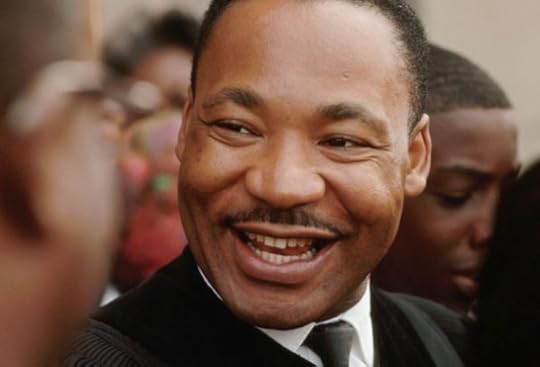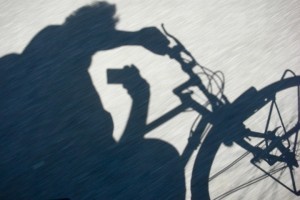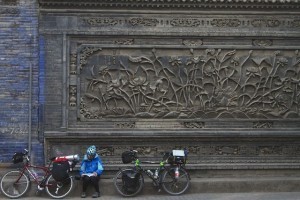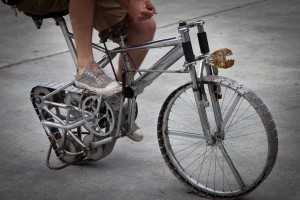Matador Network's Blog, page 2325
January 20, 2014
Guinness, Congo, and Les Sapeurs
“WE ARE THE SAPEURS. The society of elegant persons of the Congo.”
And one of the strongest visual sells of an ‘African’ story I can recall seeing in a very, very long time. I’ll stop looping it eventually, and the patina will fade one day, I’m sure. But until that happens, or until someone writes the incredibly dexterous media studies critique of it that I don’t expect, it’ll get to stay as a favourite. And here are some reasons why.
It’s a real story.
Les Sapeurs really exist as an institution in both the Congo of Kinshasa and the Congo of Brazzaville. It’s not some hokey story involving lions, or invented tribal traditions. These people are really out there, really dress like this, and really do the whole organised fashion showdowns and being a gentleman thing. Even more inspiring is that there is truth to the idea of ‘La Sape’ as a political practice, which is about transcending one’s class, wealth, and everyday grind to become something else. To reach beyond circumstance.
It’s easy to make quick judgments about the tradition being an ostentatious display of fashion by people in circumstances where there are better ‘practical’ things to spend money on. But those critiques fall short. Many Sapeurs get their clothes made locally. Or trade and swap items to create new combinations out of what they have in common. The point is reinvention, not consumption. Don’t believe me? Watch the documentary. Oh yes, Guinness made a short additional documentary too. How about that?
…told using real people
The people in the video are actual, practicing Sapeurs, doing what they do. Yes, it was apparently filmed in South Africa, and Guinness supplied some of the wardrobe items to bling it up, but the people are real, and the combinations are real. In fact, the outfits in the video incorporated a mix of the stars’ own collections with the stuff Guinness had in the end.
…without a white narrator / hero / anyone
There are people who’ve said you can’t tell a compelling story out of Africa without putting a Westerner in it. Because otherwise nobody will care. Well here’s exactly 100 seconds of beautifully produced ‘neener neener’ to that argument. May it die in shame.
…by a company that kept to the sidelines.
Yes, it’s a Guinness ad. But it’s the story of the Sapeurs first. And that exquisitely light touch is something the inevitable stampede of followers would do well to remember. The video carries itself with dignity and kickass power because it’s not primarily an advert. Or if it is, it’s an advert for the Sapeurs first, and Guinness afterwards.
Now if you’ll excuse me, I have a sudden need to burn my wardrobe, and look for an Irish pub. 

15 surprising facts about MLK Jr.

1. He changed his name.
Born Michael King Jr., his father Michael King Sr. changed his own name to Martin Luther King Sr. after traveling to Germany in 1931 and becoming a minister, in reverence to Martin Luther. There is still some controversy over whether King Sr. changed his son’s name, or whether King Jr. changed his own name, as well as whether either name was ever changed legally.
2. He powered through academia.
Martin Luther King Jr. skipped the 9th and 12th grades of high school, entered Morehouse College in 1944 at the age of 15, and had earned his bachelor’s degree in sociology by 19.
3. He got a C in public speaking.
Genius and renowned orator though he may have been, Dr. King actually got a C in his first public speaking course. By the end of his studies, however, he had climbed to class valedictorian, student body president, and had worked up to straight A’s.
4. His most famous words were improvised.
The “I have a dream” portion of Dr. King’s famous speech was, in fact, never written as part of that particular script. King Jr. had written it for a previous speech, and it hadn’t landed as powerfully the first time around. While he was delivering the historic speech on August 28, 1963, singer Mahalia Jackson shouted “Tell ‘em about the dream, Martin,” from the audience. Hearing this, King set aside his prepared speech and improvised the rest. That event would lead to the circulation of a memo among members of the FBI that read:
In the light of King’s powerful demagogic speech yesterday he stands heads and shoulders over all other Negro leaders put together when it comes to influencing great masses of Negros. We must mark him now, if we have not done so before, as the most dangerous Negro of the future in this nation from the standpoint of communism, the Negro, and national security.
5. He won a Grammy.
Though Martin Luther King Jr. was an accomplished singer, performing with the Ebenezer Baptist choir at the “Gone with the Wind” premier in Atlanta, his Grammy was awarded posthumously for “Why I Oppose the War in Vietnam,” in the category of Best Spoken Word Album.
6. He had the idea for the Occupy movement 45 years before we actually did it.
In what has been called his “last great campaign,” Dr. King sought to bring together the impoverished and underprivileged. Dubbed the “Poor People’s Campaign,” King was championing the essential core tenets of the Occupy movement in 1968. At the time of his death, some 3,000 protesters were living in tented villages around the National Mall in DC, but the campaign lost traction when it lost its figurehead.
7. He picked tobacco as a teen, which changed his life.
At the age of 15, and again at 18, the young and privileged Martin Luther King Jr. harvested tobacco on plantations in Simsbury, Connecticut as a summer job. There he experienced the closest thing to racial equality he had ever seen in his young life, and marveled about being able to eat at any table in any place in Hartford in letters to his father. This served as a strong foundation for the rights Dr. King would later champion.
8. He was the youngest Nobel Peace Prize winner.
In 1964, King was awarded the Nobel Peace Prize, and was at the time the youngest person ever to receive that recognition. Since then, the prize has been awarded to Tawakkol Karman (age 32, in 2011), though Dr. King remains the youngest male recipient of the Nobel Peace Prize. He donated the $54,000 prize to the Civil Rights effort.
9. He was the first African American “Man of the Year.”
Now “Person of the Year,” the 1963 issue of Time Magazine featured Dr. King on the cover, hailing him as “Man of the Year,” the first African American man to be recognized as such. The only other African American man to receive the title was Barack Obama, in 2008.
10. He was a huge Trekkie.
Tying his love for civil rights and Star Trek together, Dr. King convinced Nichelle Nichols (who played Uhura on the show) not to leave after the first season, as she had planned. Nichols later revealed that King had urged her to stay because her character broke the norm as an intelligent and equal member of the crew, a departure from the typical black persona on television at that time.
Nichols’ presence on Star Trek is said to have inspired and empowered a young Whoopi Goldberg, as well as astronaut Ronald McNair.
11. He was stabbed.
In 1958, a mentally ill woman named Izola Curry stabbed a seven-inch letter opener into Dr. King’s chest. The blade was on the verge of perforating his aorta; an emergency surgery saved his live. He later forgave his attacker, issuing the statement:
I am deeply sorry that a deranged woman should have injured herself in seeking to injure me. I can say, in all sincerity, that I bear no bitterness toward her and I have felt no resentment from the sad moment that the experience occurred. I know that we want her to receive the necessary treatment so that she may become a constructive citizen in an integrated society where a disorganized personality need not become a menace to any man. (Papers 4:513)
12. He was arrested almost 30 times.
Any activist will tell you that an extensive arrest record comes with the job, and for his many protests Dr. King went to jail 29 times in his 39 years of life.
13. His house was blown up.
During the 385-day Montgomery Bus Boycott (ignited by the protest action of Rosa Parks), Martin Luther King Jr.’s house was bombed in an effort to intimidate him into calling off the protest. Dr. King then held a mass gathering in the ruins, and pled for nonviolence.
14. His birthday was not fully recognized as a national holiday until this century.
Though President Reagan signed it into law in 1983, MLK Day wasn’t fully recognized by all 50 states until the year 2000. The last states to hop on the appreciation bandwagon were Arizona in 1992, New Hampshire in 1999, and finally Utah, in 2000.
15. He is globally revered.
Outside the US, MLK Day is also celebrated in Toronto, Canada, and Hiroshima, Japan, and there are monuments in his honor in Sweden, England, Havana, Australia, Colombia, Kenya, and Jerusalem. The statue of him in Westminster Abbey is one of ten 20th-century world martyrs immortalized there. 

Hunting black rhinos to 'save' them?

Photo: Martin Teschner
CAN A SPORT HUNTER be an animal conservationist? Carey Knowlton, who bid $350,000 for a permit to hunt black rhino in Namibia, claims he’s doing it to save the animals from total extinction. “I am a passionate conservationist,” he says, and the Dallas Safari Club, who offered the permit for sale, will donate the money to the government of Namibia for their continued efforts to preserve the species.
The debate on the topic has been heated, and you might wonder how there can be a debate at all: Isn’t paying a pile of money to hunt a critically endangered animal one of the things movies use to indicate when someone is a supervillain? But believe it or not, Knowlton has some wildlife conservationists on his side.
The International Union for Conservation of Nature points out that emotional responses to the situation ignore the larger issues. They claim that hunting the occasional weak rhino will make the remaining few more precious to the local community, increasing incentives to save them. Much in the same way that Rwanda sells permits to visit mountain gorillas, disrupting their natural habitat for the sake of raising awareness, the IUCN believes drawing attention to the rhinos can only help them.
Both Namibia and South Africa release 5 hunting permits every year, with purchasers receiving permission to hunt one specific rhino — not shoot wildly through the herd at large. Knowlton’s permit is for a “surplus” rhino, which are designated as male rhinos past breeding age, who often become dangerously aggressive towards other members of the herd. Fighting between males can kill females and calves in the crossfire, and studies have shown that herds with fewer males actually reproduce faster. As Knowlton says, “One of the other ear-tagged killer rhinos is going to injure it. And then either lions or hyenas are going to drag it down. It’s going to die [in] a horrible manner, slowly.”
Knowlton is very outspoken about his passion for animals…he’s so passionate that he’s hunted over 120 different species on 7 continents. As the owner of a trophy-hunting tour company based in Dallas, this is an unprecedented opportunity to hunt an animal that almost nobody in North America has hunted before. “I want to experience the black rhino,” Knowlton is quoted as saying, which reveals the truth behind his conservationist ideals: You don’t talk about “experiencing” an animal through killing it unless what you’re really interested in is the feather in your cap…or in this case, the rhino head on your wall.
It also doesn’t hurt the government of Namibia to have so much controversial attention aimed their way at a time when they’ve just been voted one of the top 10 “Places to Go” by The New York Times. Those who believe any publicity is good publicity might side-eye the government’s support of Knowlton’s efforts.
While there may be benefits to removing the dangerous rhinos and preventing them from damaging the rest of the all-too-precious herd, one has to wonder: If Knowlton cares more about the welfare of the animals than the head on his wall…why not just buy the permit and tear it up? The money would be donated to conservation anyway, and he wouldn’t be getting death threats. His eagerness to rush to Africa and bag a rhino, while painting himself purely as a wildlife enthusiast with an endangered species’ best interests at heart, is the reason the whole sale rings false.
It feels like just one more opportunity for a dude with way too much money to treat the world like his playground. 
Note: There is a poll embedded within this post, please visit the site to participate in this post's poll.

The art of travel by bicycle
There’s a point during the second week of a cycling tour when something beautiful begins to happen.
Your body resigns to working five to eight hours a day, your muscles having pushed through the initial aches to a state of warm, sinewy resilience. Your mind seems to slow and sync with the speed of the drivetrain, so you’re no longer bored by the stretches of flat forest road or counting the miles till the next pit stop. And you’ve traversed enough of the land to begin to see the terrain’s natural flow, from rocky coastline to river valley to piney hills and on forever beyond the next curve in the road.
In the summer of 2008, my wife and I took a month to cycle around the Atlantic Canadian provinces of Nova Scotia, Prince Edward Island, and New Brunswick. Five and a half years later, this is what remains.
 This post is sponsored by SanDisk. Click through to read more of life’s stories, told from memory.
This post is sponsored by SanDisk. Click through to read more of life’s stories, told from memory.

1
Self-sufficiency
At its most fundamental, cycle touring is a lesson in self-sufficiency. You are what you carry: clothes, tent, food, water, cookery, entertainment, and the equipment to fix it all if something goes wrong. I rode a Trek 520 with two rear panniers, a drybag and duffel on top of those, and a handlebar bag up front. Total rig weight, 87lbs.
All photos: Aya Padron

2
Cape Sable Island
You do a fair amount of planning beforehand -- your basic route, likely stopping places, where to resupply -- but a bicycle tour also leaves room for spontaneity. Towards the end of our first full day of riding, we decided to blow past our initial sleep spot and instead found this hostel home on Cape Sable Island. The owner let us camp in her yard and use the facilities for a $20 "donation."

3
Roseway River
Atlantic Canada has a well-maintained system of provincial parks. This was our campsite view at The Islands, just outside of Shelburne, where the Roseway River empties into Shelburne Harbour.

More: What are your favorite travel memories?

4
Rearview
For the most part, vehicle traffic was scarce. These provinces typically featured express highways flanked by much quieter, and more scenic, local roads. Still, you make a habit of checking your mirror whenever you hear a car approaching. I actually experienced 'mirror-withdrawal syndrome' when I was off my bike -- looking down at my left hand for a rearview that didn't exist.

5
Post-mileage
The moments after setting up the tent and getting out of the campground shower can be some of the sweetest of the day, especially when you've made your mileage more quickly than expected. You can feel your body melt into relaxation, its power reserves recharging for the next day's ride, or an afternoon hike.

6
Oyster
We had a day like this in South Harbour, Cape Breton Island. With 33 miles of hills behind us, we arrived at Hideaway Campground to find campsites with bluff-top views over the ocean. The owners also happened to have exclusive harvest rights to the oysters in nearby Aspy Inlet. We purchased a dozen on the half-shell in the campground office.

7
Peggy's Cove
For a lot of the ride we were tracing coastlines, which in Nova Scotia meant bare, rocky hills leading to thick pine forest, with old fishing villages and lighthouses every few dozen miles. This is Peggy's Cove, one of the better-known (and visited) settlements.

8
Cape Breton Island
But on Cape Breton Island, which sits northeast of Nova Scotia proper, something different happens. The terrain rises over 1,500 feet into mountains that end in dramatic cliffs at the ocean. The road that circumnavigates Cape Breton Highlands National Park is called the Cabot Trail and is an international destination for cyclists.

9
Skyline
The Cabot Trail is all long climbs and descents. On the northwestern side, you can look over and see French Mountain, topped by hikers on the Skyline Trail. Another distraction: moose on the road.
Intermission

Dispatches from a cross-country bike trip

5 ways to improve your cycle-touring video

40 of the most creative custom bikes on the road [pics]

10
Smokey
After abundant sun along the south coast of Nova Scotia, the weather became moodier on Cape Breton. Which seemed to fit the landscape. This was the view from our campsite in Englishtown, looking north toward Cape Smokey.

11
To Cheticamp
The rain hit hard on the ride into Cheticamp, blowing in horizontally off the water, threatening to push us off the narrow shoulder of the two-lane and into traffic. The owner of the B&B we stayed at that night seemed to have seen her fair share of shivering cyclists dripping puddles onto her porch.

12
Maps
Part of each day's ritual was mapping out the next. Pick a route, highlight a campground, add up the mileage. Here we are on the approach to Charlottetown, PEI.

13
In the rain
We were dodging (or, more often, not dodging) rain for the rest of the tour. While it sounds miserable, and in this picture we look the part, cycling in the rain is strangely fulfilling. Once you're soaked you can't get any wetter, and you know you've done due diligence in waterproofing your gear, so there's nothing left but to enjoy it. If you succeed, you feel like a five-year-old.

14
Blur
This image is a near-perfect memory of our ride through Prince Edward Island -- gentle green hills, wildflowers, rain gear, and the movement of the road.

15
Ending
The ends of trips are sometimes lacking in emotional potency compared to beginnings. This one was not. Sitting by the campfire on our last night in New Brunswick, looking back over the atlas and the nearly 900 miles of road we'd covered, I was immensely grateful. Ready to go home, but forever connected to this place, in the way only travel at 17mph can connect you. [image error]

Matador Network's Blog
- Matador Network's profile
- 6 followers



